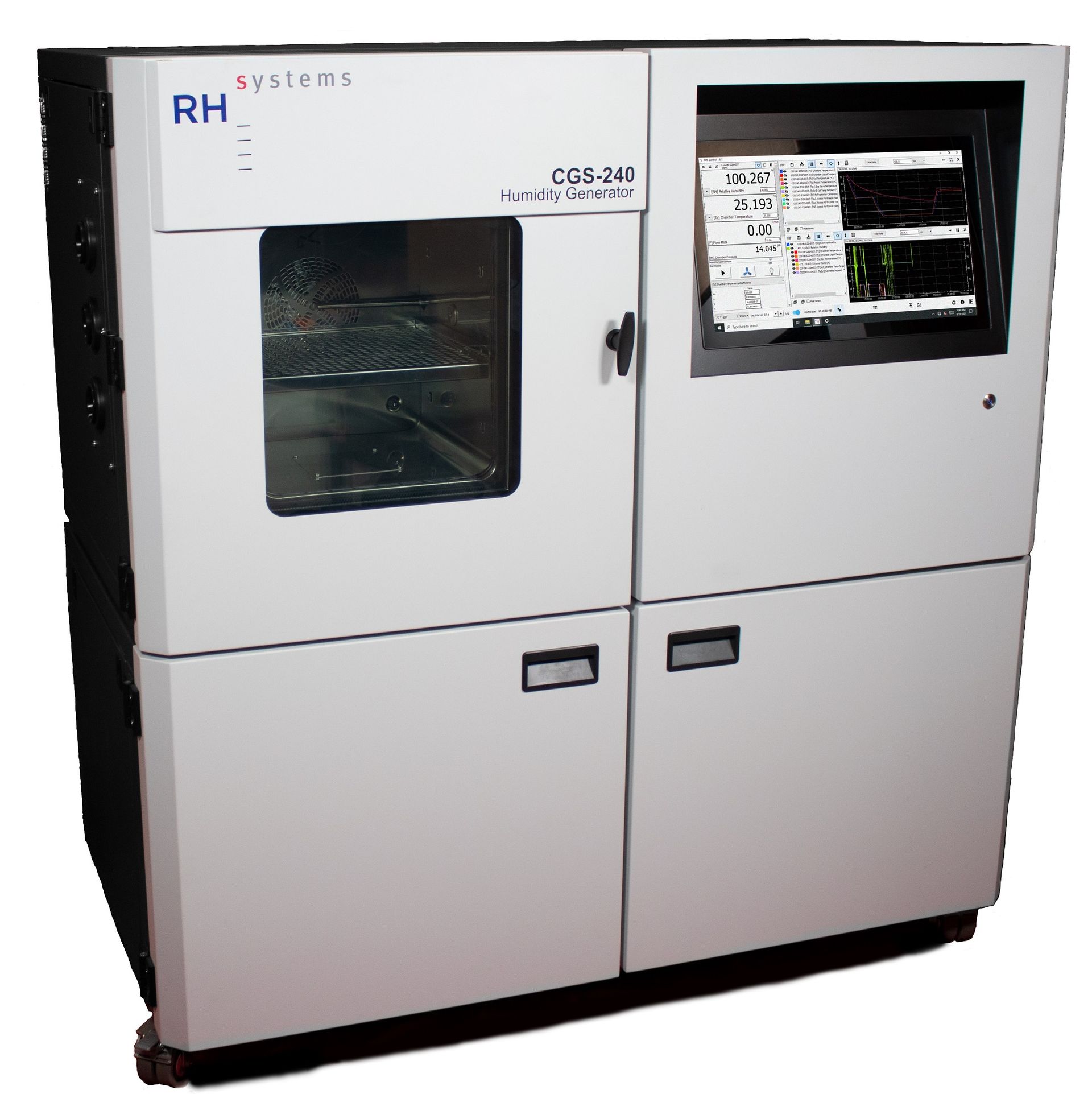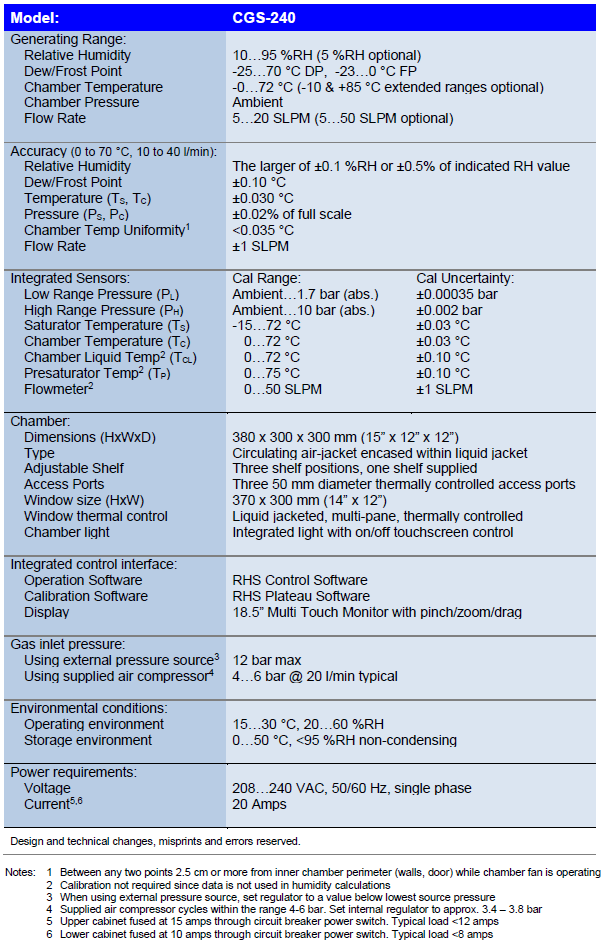RH Systems CGS-240 Humidity Generator
+++ Fully automated climate humidity generator
+++ Temperature range 0 °C to 72 °C (-10 °C to 85 °C)
+++ Humidity range 10% to 95% RH (5% to 95% RH)
+++ relative humidity accuracy: ±0.5% of reading
+++ Integrated color touchscreen with pinch-zoom functions
+++ Large test chamber (34 l) with several shelf supports
+++ Full-surface, thermally controlled window
+++ Integrated chamber lighting
+++ Three temperature-controlled access ports

Fully Automated Two-Pressure Two-Temperature Humidity Generator
The RH Systems CGS-240 Humidity Generator is a system capable of continuous, high-accuracy humidity generation over a wide range of humidity, temperature, and flow rates. The CGS-240 design is an RHS hybrid two-pressure two-temperature design based on the primary thermodynamic principle also used in many metrology institutes.
Operating Principle
A hybrid humidity generator uses the thermodynamic primary principle of humidity generation with two pressures and two temperatures, which is also used in many metrology institutes. Utilizing these principles, a stream of gas at an elevated pressure is saturated with respect to the liquid or solid phase of water at a given saturation temperature. Here, saturation temperature is the major determining factor for the quantity of water vapor admixed with the carrier gas. Pressure within the saturator is the major determining factor for the carrier gas quantity of the mixture. Upon leaving the saturator, the humidified gas stream (consisting of the water vapor admixed with the carrier gas) is then expanded to a lower pressure and warmed to an alternate temperature at the point of use, such as a Device Under Test (DUT). Measurements of the pressure and temperature within the saturator, and the pressure and temperature following expansion (generally at the DUT), are then used to determine the resulting humidity content of the gas stream. Humidity is then accurately controlled by regulation of the temperature and pressure within the saturator.
Large, Thermally Uniform Chamber
The chamber utilizes a robust design, with a cable management system for the chamber temperature probe, sample gas injection to the center of an air circulation fan, local pressure measurement, and a multi-position shelving system. It is equipped with high performance thermal insulation surrounding the door and all sides of the test chamber, and features a soft silicone profile seal for perfect tightness. An integrated chamber fan provides internal air circulation which ensures uniformity and stability throughout the working volume.
Thermal Control and Stability
The liquid jacketed chamber door uses heavy duty hinges, a recessed latching mechanism, a built-in light, and integrated heating for the door frame and window. The window inner pane is liquid jacketed and thermally controlled at the same temperature as the chamber to aid significantly in chamber stability and temperature uniformity. The chamber is also liquid jacketed meaning all 6 walls of the chamber are thermally controlled. An air-jacket is then encased within the liquid jacket to ensure unparalleled stability and uniformity.
RHS Control
RHS Control is our custom program allowing the user to operate the humidity generator system from the integrated touch screen monitor. The system may be operated manually through direct entry of desired setpoints, or automatically through a user defined profile. Profiles are a sequence of preprogrammed, user selectable setpoints and dwell times which allow for fully automatic operation and data collection, free of further user intervention.
Data Collection
RHS Control allows for connection of various instruments via digital communication for continuous monitoring, control, and associated data collection. Many instruments with RS-232 or RS-485 communication capability require only an RHS or user-written description file (.json file) to enable data monitoring and collection. Collected data is viewable both numerically and graphically. All data from the CGS-240 and any connected instruments may be viewed together on a common graph. Data is automatically stored to files during collection for later import to Excel and other post process analysis and graphing programs.
Hybrid Two-Pressure Two-Temperature Design
In competitor‘s two-pressure designs, the saturator and chamber share a common temperature. While simpler in mechanical implementation, a distinct disadvantage of those basic two-pressure methods is that low humidity generation requires excessively high saturation pressure. This high pressure requirement constrains system design while adding greater burden on air compressor systems.
In contrast, the CGS-240 hybrid design exploits combined capabilities of both the two-pressure and two-temperature principles where the saturator and chamber temperatures are controlled independently of each other. Operating at a lower saturation temperature results in diminished pressure requirements as compared to basic two-pressure systems. This CGS-240 hybrid design allows for a larger humidity generation range with only modest pressure requirements.



